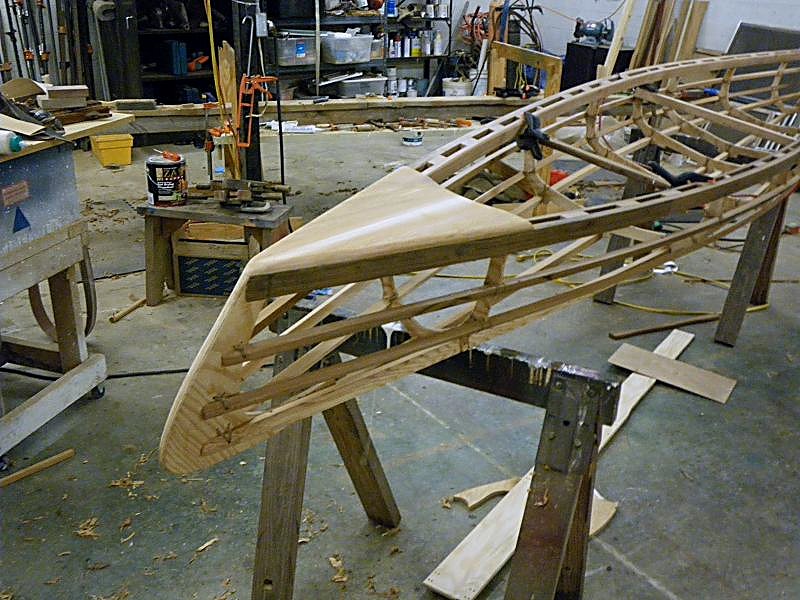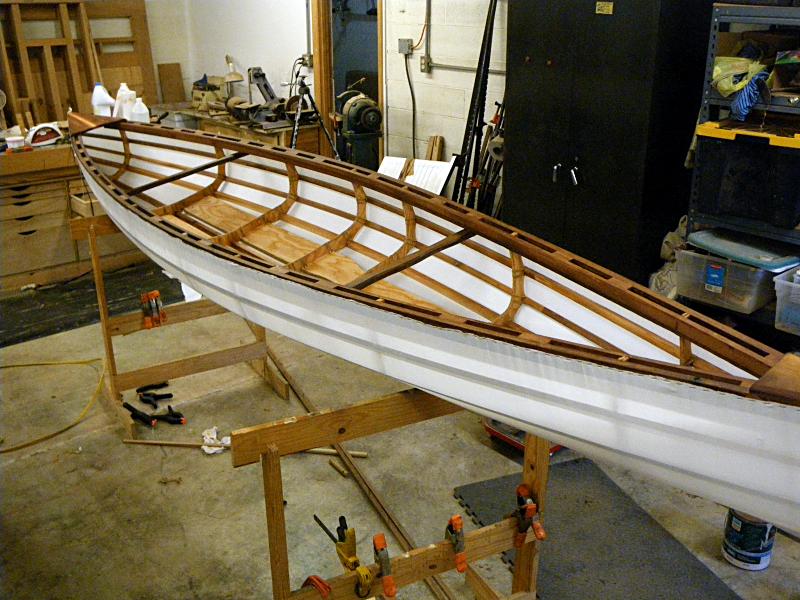Quick intro since I am new here. I am a builder of SOF kayaks and kits and I have gotten interested in canoes. I am currently building one for my personal use as a fishing boat for the smaller creeks and streams around me.
Here is a photo of the frame. It is almost finished and ready for skinning.

The last thing I will do is install the seat. Since this is a new design and my first canoe I am not really sure how high I will be able to mount it and keep the boat stable enough to fish and move around comfortably.
If I am going to spend several hours in this boat I am going to need some back support so I am looking for some ideas of a nice looking way to do this. I don't need anything really tall, just something on the lower back. In my kayaks I have a nylon backband that I sell that depending on the seat height might work. But I am would like something that would look a little better and hoping you guys could give me some ideas.
I saw a premade wicker seat with back from one of the suppliers but I really prefer to make my own if I can. I could just stick a stadium seat on top of the steat and that may be the best option. But I was hoping for something a bit more creative and better looking.
Here is a photo of the frame. It is almost finished and ready for skinning.

The last thing I will do is install the seat. Since this is a new design and my first canoe I am not really sure how high I will be able to mount it and keep the boat stable enough to fish and move around comfortably.
If I am going to spend several hours in this boat I am going to need some back support so I am looking for some ideas of a nice looking way to do this. I don't need anything really tall, just something on the lower back. In my kayaks I have a nylon backband that I sell that depending on the seat height might work. But I am would like something that would look a little better and hoping you guys could give me some ideas.
I saw a premade wicker seat with back from one of the suppliers but I really prefer to make my own if I can. I could just stick a stadium seat on top of the steat and that may be the best option. But I was hoping for something a bit more creative and better looking.




